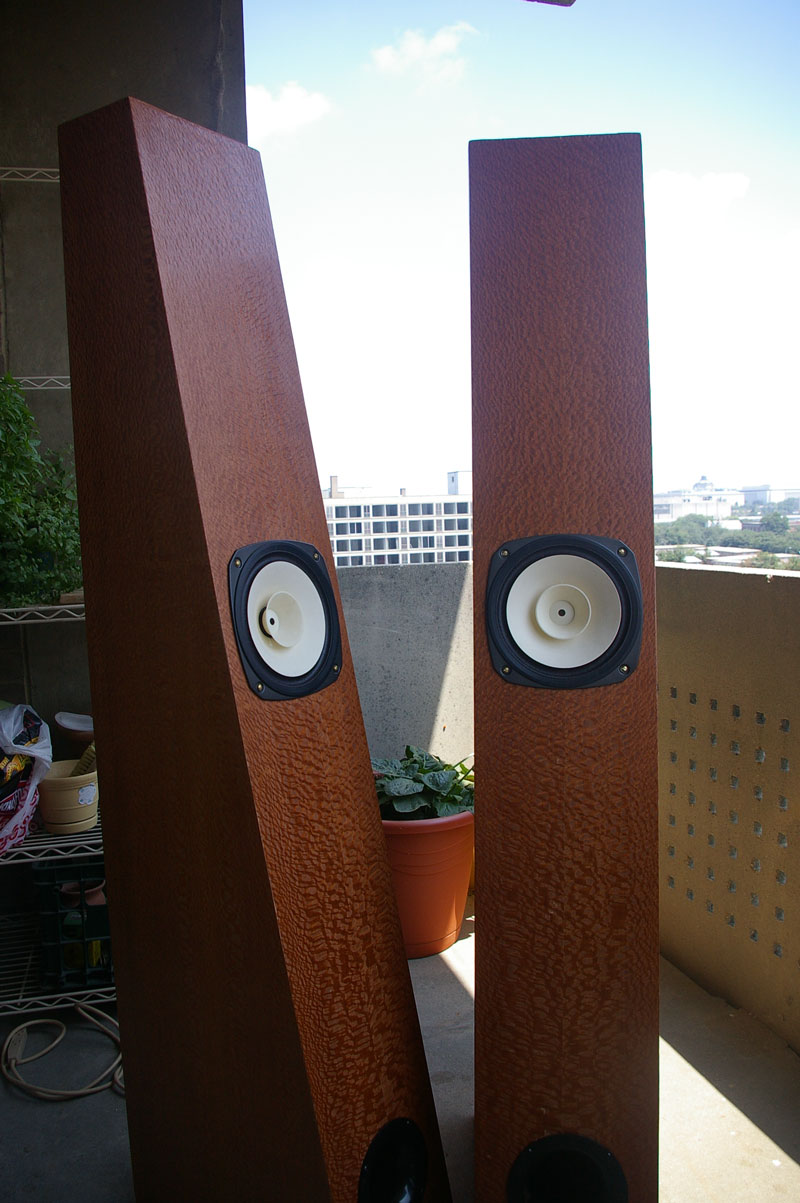
There is a large spine on the back of the horn speaker cabinets which makes them a very rigid structure. The front baffle board and bottom are doubled up in thickness. The timber used for the speaker cabinets is 21 mm thick pine plywood. Stainless screws, glue, dowelling and clamps were employed to assemble the horn speaker boxes. There are thirty-six pieces of timber in each speaker box.

In Photograph 4 you can see the complexity of design and construction of the horn speaker cabinets. A few months after requested, my speaker cabinet maker delivered the first of the two large back-loaded horn speaker cabinets. Area calculation in excelīituminised aluminium foil is layered on the magnet and and also wrapped around the spokes struts of the speaker basket.
#FOSTEX FE206EN ENCLOSURE DRIVERS#
The back of the drivers really has to be treated in some fashion due to the large size of the magnet surface and the shallowness of the first compression chamber in the horn cabinet. To the stamped speaker chassis I have added bituminous aluminium foil to dampen the Fostex FEEn drivers frame Photograph 3.
#FOSTEX FE206EN ENCLOSURE DRIVER#
For more tips and ideas see the Fostex FEEn fullrange speaker driver tweaks and modifications page. Note that there are many tweaks and modifications that can be made to improve the performance from the Fostex FEEn drivers. The magnet of the FEEn driver is extremely large so it is also covered with bitumanized aluminium foil tape Photograph 2 to help reduce sound reflections from the back of the speaker box.īetter yet would be to cover the magnet with a more sound absorbing material like felt or wool. The photographs below show the Fostex FEEn fullrange speaker drivers used with the rear-loaded horn speaker cabinets.

Sound absorbing material should be used directly behind the driver and also at the mouth of the horn to smooth out the frequency response.įigure 1 below shows the speaker box plan from the datasheet. The remainder of sound spectrum mid and high-frequency ranges is radiated directly from the front wave produced by the speaker driver.īack-loaded horn speaker enclosures are generally amongst the most efficient enclosure systems and respond well to the subtlest components of music signals.įor "tighter" sound reproduction, you can reduce the interior volume of the horn speaker cabinet using fill material.

The back-loaded horn speaker enclosure operates by developing the bass response using the back wave from the speaker driver and an expanding horn section.

The difference however is that back-loaded horn BLH speaker enclosures make among the most efficient use of the back wave from the speaker driver. The back-loaded or rear-loaded horn loudspeaker system is like bass-reflex and double bass-reflex speaker types in that the sound radiated from the back of speaker transducer is utilized to enhance the bass response. Being impressed with the great sound from the smaller double bass-reflex speaker boxes I decided I wanted to get horny and have a pair of the large back-loaded horn loudspeaker enclosures made up. The speaker enclosure plans for the double bass-reflex cabinets were provided with the FEEn driver documentation which also included speaker cabinet plans for a large back-loaded horn speaker enclosure. For their size and cost the Fostex FEEn double bass-reflex speakers really sound great.


 0 kommentar(er)
0 kommentar(er)
